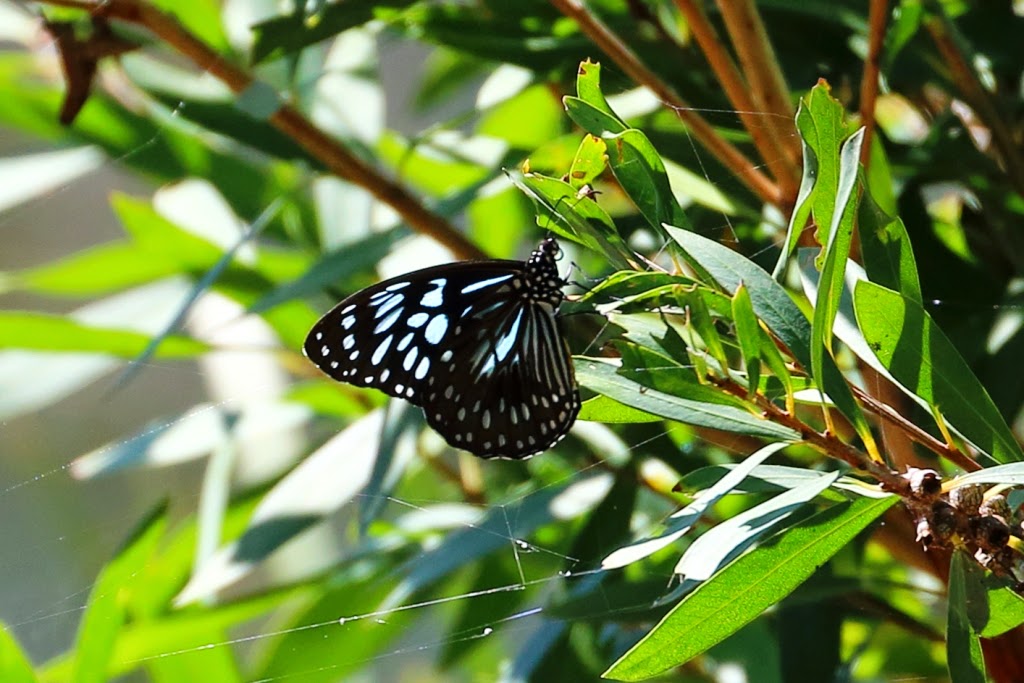After our morning visit to the Fearnley Bird Hide (see
previous blog) we made our way to Noosa Botanic Gardens on Lake Macdonald
Drive. First we stopped on the lake edge for a picnic morning tea overlooking
the lake.
Fortified we walked up to the Botanic Gardens and had a very
pleasant stroll around the grounds. We discovered that there are beautiful
picnic areas in the gardens as well.
We loved the Sausage Tree Kigelia africana which was fruiting and flowering
at the same time.
The gardens are landscaped into different areas including a small Sculpture Garden.
The amphitheater is very impressive and it is easy to
imagine weddings and performances being held in such a beautiful setting.
We seemed to have chosen the hottest day of the year to walk
around but despite the heat there were a few birds and butterflies around. We saw our photography nemesis, a Blue Triangle and of cause we got a photo of a Blue Tiger as they have been so numerous this summer.
 |
| Grey Butcherbird |
 |
| Blue-faced Honeyeater, juvenile |
 |
| Laughing Kookaburra |
.JPG) |
| Blue Tiger Tirumala hamata |
The Bird of Paradise Strelitzia reginae was putting on a good show.
We had planned on exploring further around the Lake Macdonald and having a picnic lunch at another park on the lake but due to the unseasonable hot weather we decided to head home early. I'm sure we will be back.
All photos were taken in March 2015

_collage.jpg)
_collage.jpg)



